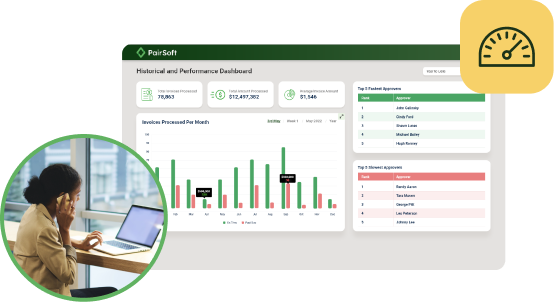
Wadih Pazos
Wadih founded both PairSoft and PaperSave. He is an avid technologist who specializes in streamlining operations and maximizing productivity.
View all posts by Wadih PazosWadih Pazos

But new technological innovations such as paperless systems have made UC a realistic goal. According to Carlos Molina, CFO and senior vice president of finance and administration, that was the case for nonprofit health and human services firm United Way of Miami-Dade, after the organization deployed a paperless document management solution seven years ago.
“We realized it wasn’t just that; it was the ease with which we could communicate with each other,” Molina said. “You scan the documents somewhere else and you process the actual data in a centralized office.”
Awareness of the benefits of unified communications appears to be on the rise, according to research from ITWeb. The survey revealed:
That was certainly true for Advocate Charitable Foundation. Mitchell Gibbs, vice president of advancement services, said the cost of implementing a paperless system was extremely reasonable.
Another challenge organizations will have to overcome going forward is accommodating bring-your-own-device (BYOD) practices.
The ITWeb survey revealed that approximately 60 percent of companies allow employees to work remotely. Nearly a quarter of respondents said more than half of their workforce is based outside the office.
Unified communication systems will make BYOD significantly easier to achieve. It will enable companies to benefit from boosts in productivity, cost-efficiency, and worker morale advantages, which many studies have indicated BYOD can lead to.
For Gibbs and Advocate Charitable Foundation, the organization “found that our staff ended up really liking it and were able to integrate it into our workflows, rather than having to adapt to the way PaperSave worked. … It’s dramatically improved our communication within our teams.”
That sentiment was backed up by a recent PricewaterhouseCoopers study, according to Business 2 Community. The report revealed that top-notch communication between CIOs and other executives makes a company four times more likely to outperform its competitors.


Many organizations start with manual receipt handling, fragmented card feeds and slow AP processes. Implement AI agents to auto-capture receipts, route approvals, enable punch-out buys and post to the ERP.
Result: faster batching, fewer errors and cost savings. “This saves us hours every month.”
Many organizations face slow, paper-heavy AP and fragmented procurement that waste time and inflate costs. AI Agents can automate approvals, PO matching and record sync to improve speed, accuracy and control. Client quote: “It freed up hours and made our process reliable.”
Operational drag and rising costs slow growth: teams waste time on manual tasks, misaligned priorities and opaque processes. AI Agents help automate routine work and coordinate actions across teams. “We’ve lost time to repeats and handoffs,” says a typical client.
Companies struggle with manual procurement, fragmented approvals, and costly integrations that slow growth and obscure spend. Our AI Agents streamline requisitions, POs, and invoice matching to cut manual work and improve visibility. “We were wasting time and missing insights,” says a client.

Many teams start with fragmented PO/AP systems, manual matching and delayed financial reporting. Deploying AI agents to automate PO checks, real-time encumbrance tracking and invoice matching reduces processing time and errors, delivering live budgets and faster closes. “Finally, we can see current balances and approve instantly.”
Many companies juggle growing invoice volumes and legacy systems. They struggle with manual processes, compliance gaps and limited headcount. Our AI Agents automate integrations, enforce rules and surface exceptions. The typical outcome: faster closes and measurable ROI. “We stopped chasing invoices.”